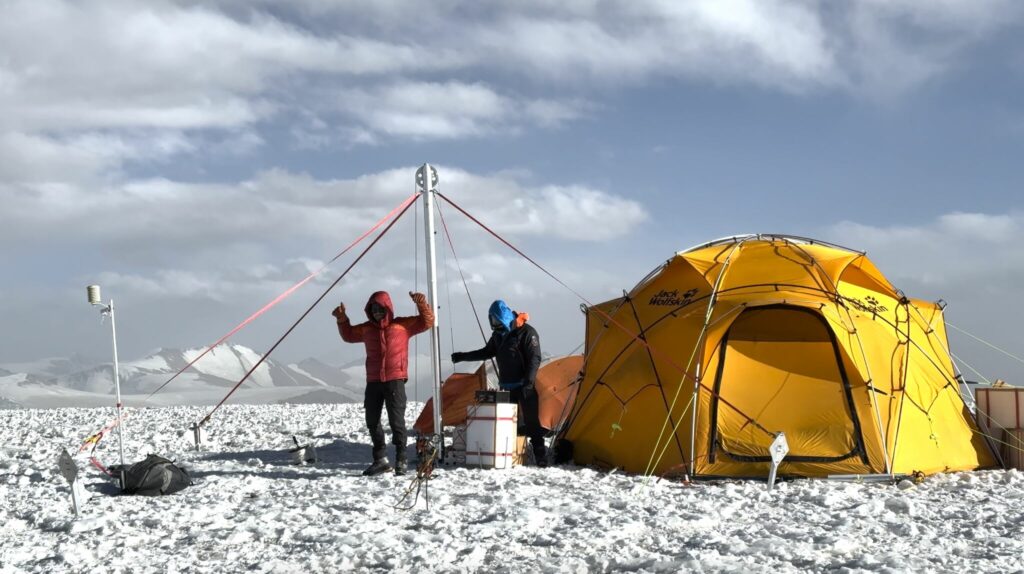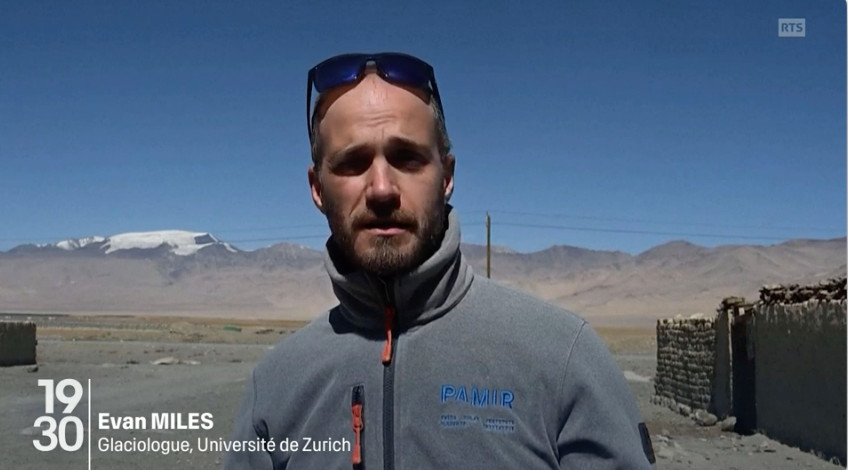Looking into the past to unravel the mystery of Pamir glaciers
In the Pamir Mountains of Tajikistan, certain glaciers have been resilient to climate change in recent decades – in sharp contrast to those in the rest of the world. Evan Miles and Andreas Henz, glaciologists at the Department of Geography, took part in an international team to collect two ice cores at an altitude of over 5,800 meters in order to understand this phenomenon.

“Unlike glaciers around the world, which we know are losing mass at an increasing rate, the mass of glaciers in the Pamir region has remained relatively stable,” Evan Miles, a glaciologist at the University of Zurich and the University of Fribourg, and leader of the expedition, told Swiss French-language radio and television station RTS. “Some of them are even growing.”
One of several hypotheses for the so-called Karakorum anomaly is the intensive irrigation and evaporation on the Pakistani side of the Pamir-Karakorum region. This causes water to return to the atmosphere and be transported to the heights of the Pamir, where it falls back down in the form of snow.
Over the past 10 years, however, glaciers in the region have shifted into definite mass loss. The glaciers experienced particularly severe mass loss in 2025. “It is therefore a key question to understand whether the glaciers are already tipping into decline”, says Miles. “Insights into past climate history from the ice core will be essential for this purpose.”
Dem Rätsel der wachsenden Gletscher von Pamir auf der Spur
SRF, 26.10.2025
Like a climate archive
The team drilled two 105-meter-long ice cores out of the glacier. One ice core will undergo detailed laboratory analysis at Hokkaido University. The second, through collaboration with the Ice Memory Foundation, will eventually travel to Antarctica to be preserved for future generations of scientists. The ice layers within these cores, which have formed over centuries, perhaps even millennia, are like a climate archive and could provide answers to questions that could influence global glacier protection: Will these glaciers experience a decline like the rest of the world? Or could they also recover?
PAMIR Flagship Programme
Ice Memory Foundation
Image: Swiss Polar Institute / Ice Memory Foundation
